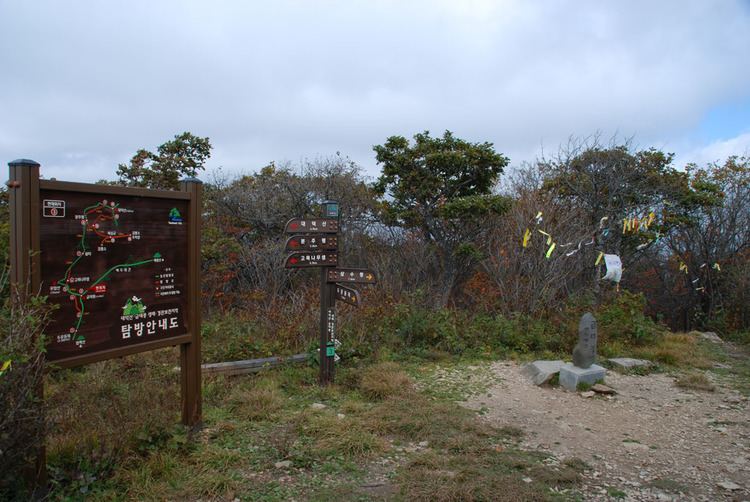Hangul 백두대간 Revised Romanization Baekdu daegan Highest point Seonjaryeong Mountains Seonjaryeong | Hanja 白頭大幹 McCune–Reischauer Paektu taegan Country North Korea | |
 | ||
Similar Paektu Mountain, Jirisan, Seoraksan, Sobaeksan, Deogyusan | ||
The Baekdudaegan is a mountain range and watershed-crest-line which runs through most of the length of the Korean Peninsula, from Paektu Mountain in the north to Jirisan in the south. It is important in traditional Korean thought, a key aspect of Pungsujiri philosophy and practices. It is often referred to as the "spine" of the Korean Peninsula, and depicted in various historic artworks. It incorporates the Sobaek mountain range and most of the Taebaek mountain range.
Contents
Map of Baekdudaegan
The term Baekdu daean refers to an elongated mountain ridge that runs from Baekdu Mountain in the north, to Jiri Mountain in the south. Baekdusan Mountain (2,744m), which stands at the northern reaches of the baekdu daegan, is widely perceived as the father of all Korean mountains, 1400 kilometers in length, it is often referred to as the backbone of the Korean peninsula Some people dream of walking along the entire trail along the crest of the range, which runs across the militarized border. The section in South Korea was designated as a national nature-preservation park in 2006 by the South Korean government.
History
During the Japanese colonial era (1910-1945), Imperial Japan attempted to restructure Korean mountains in accordance with the concept of mountain ranges. The notion of the mountain ranges that prevailed during the Japanese colonial era was one based on geological structures under the ground rather than topographical ones.
